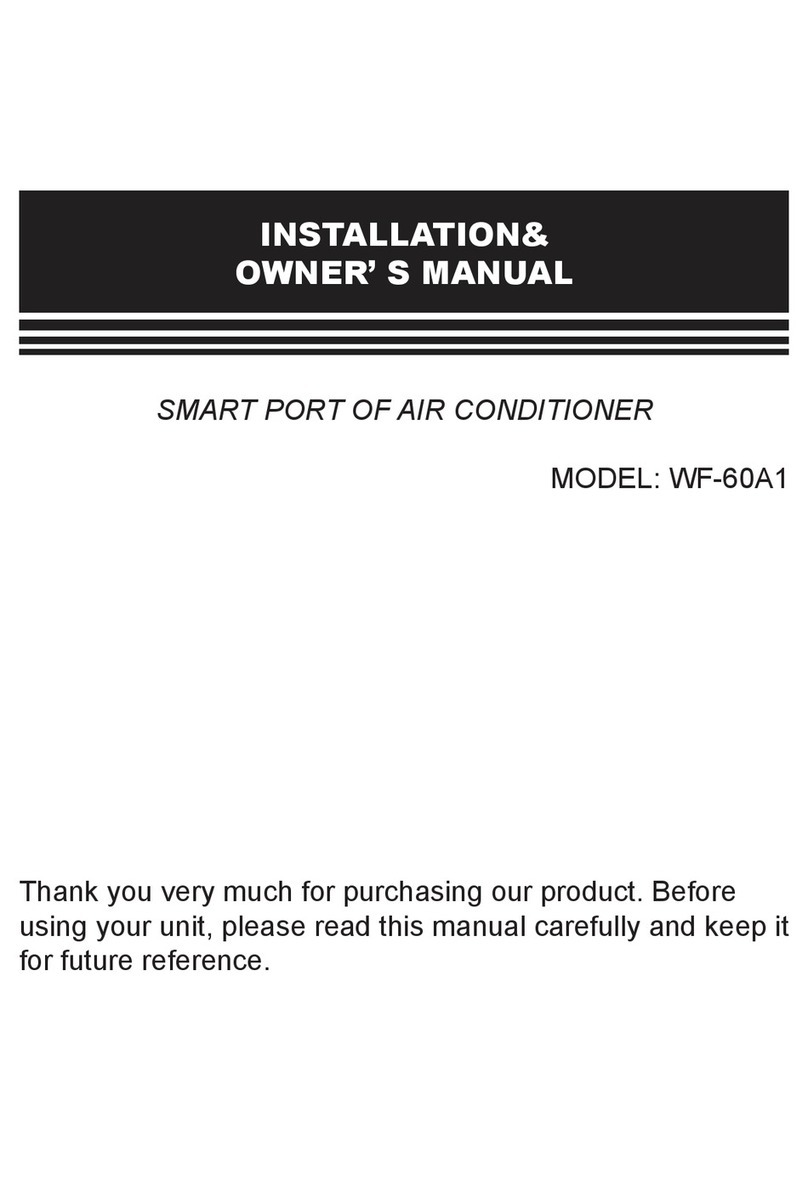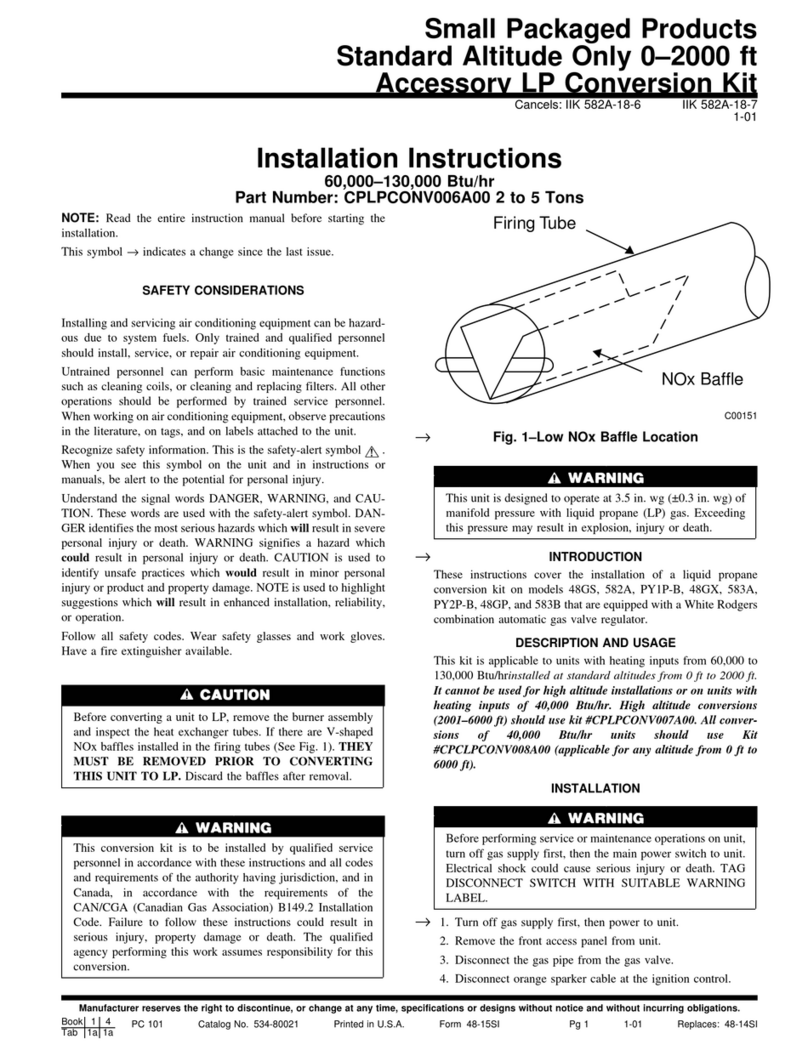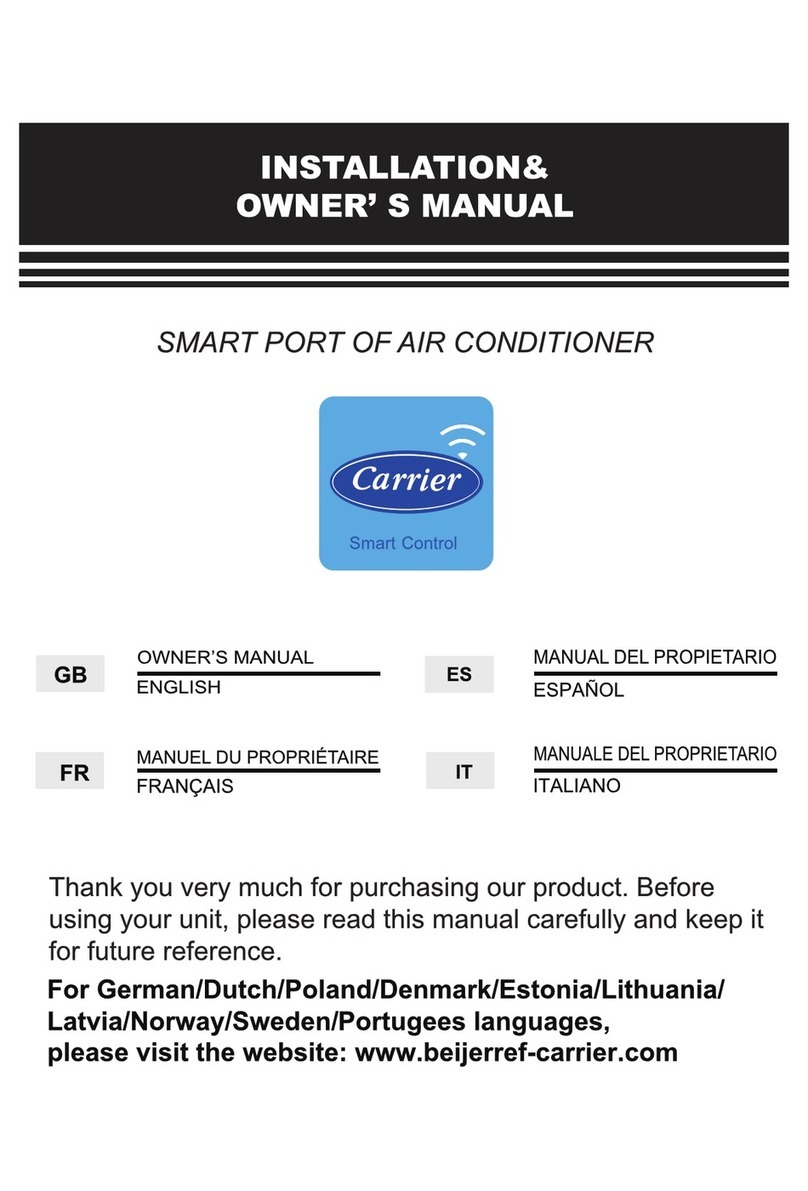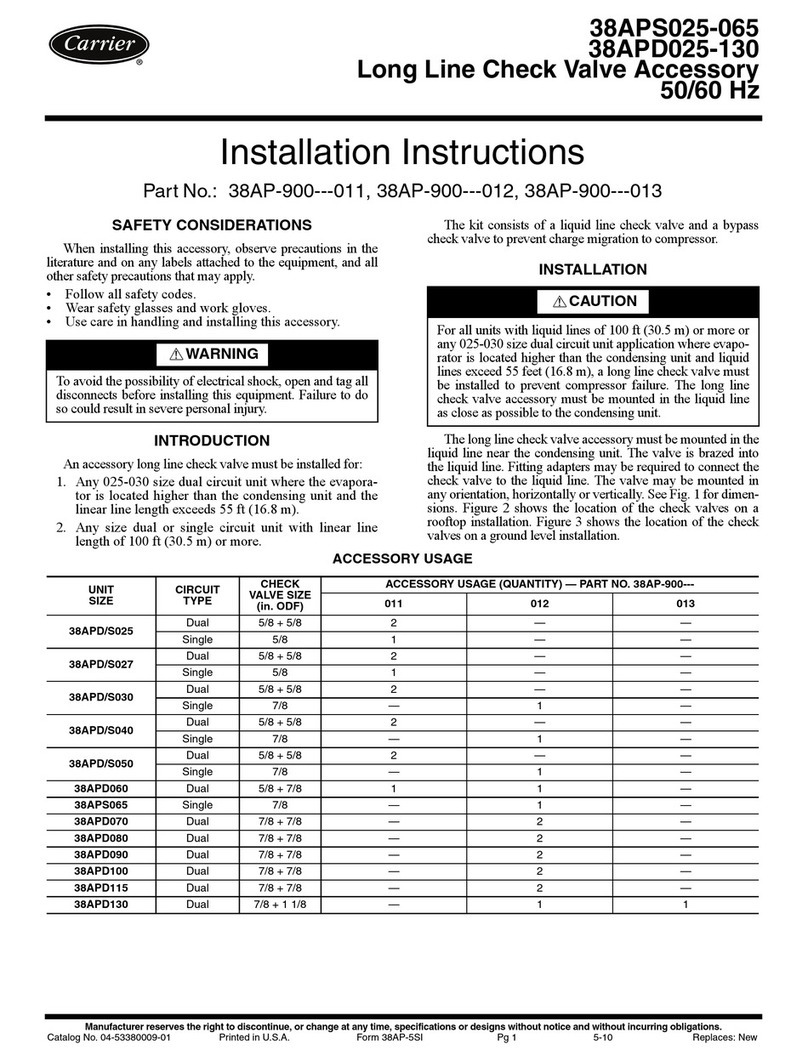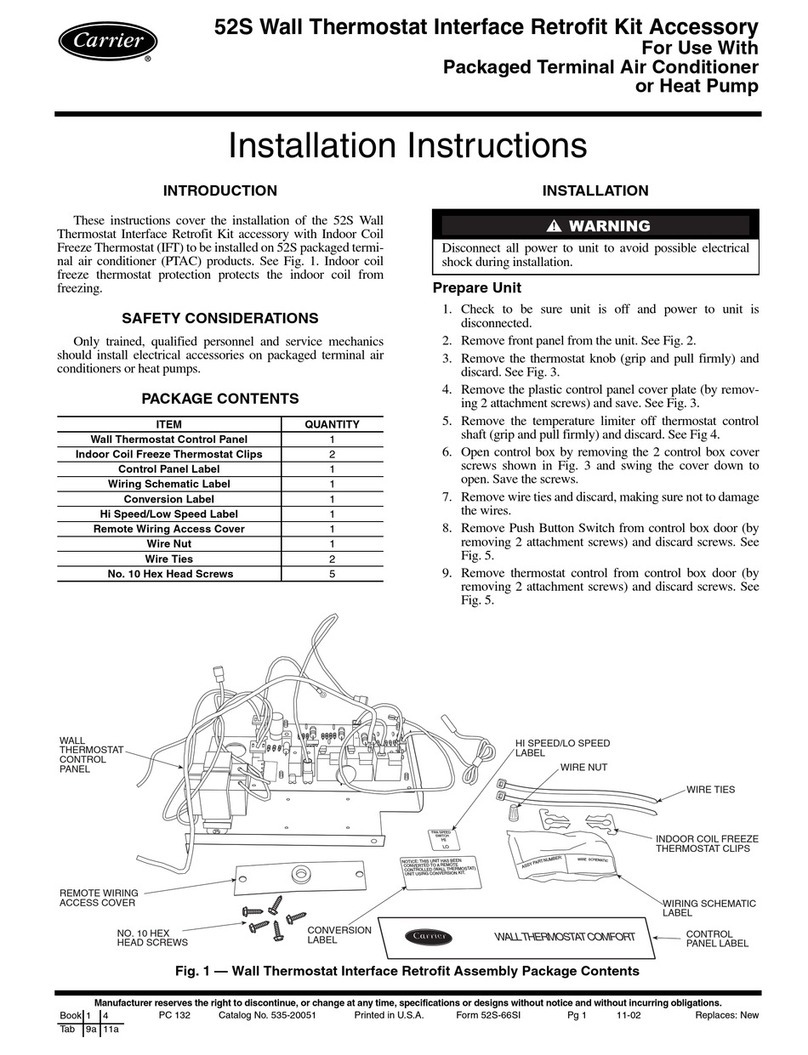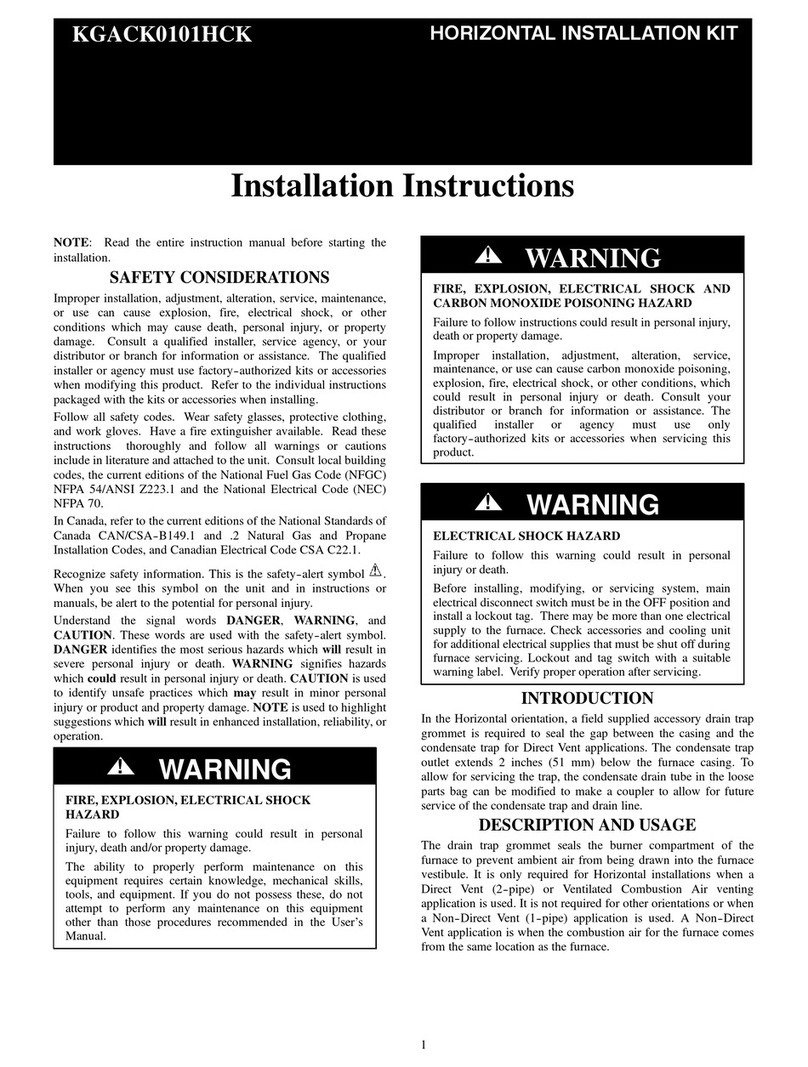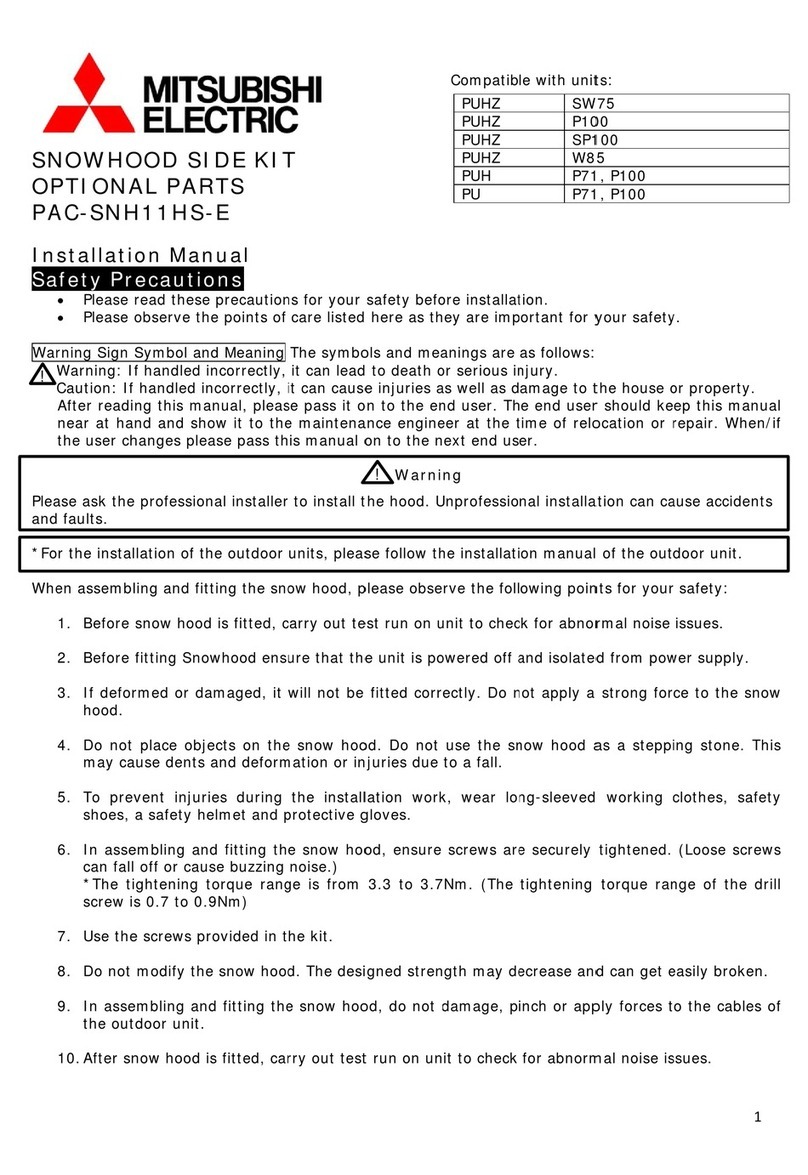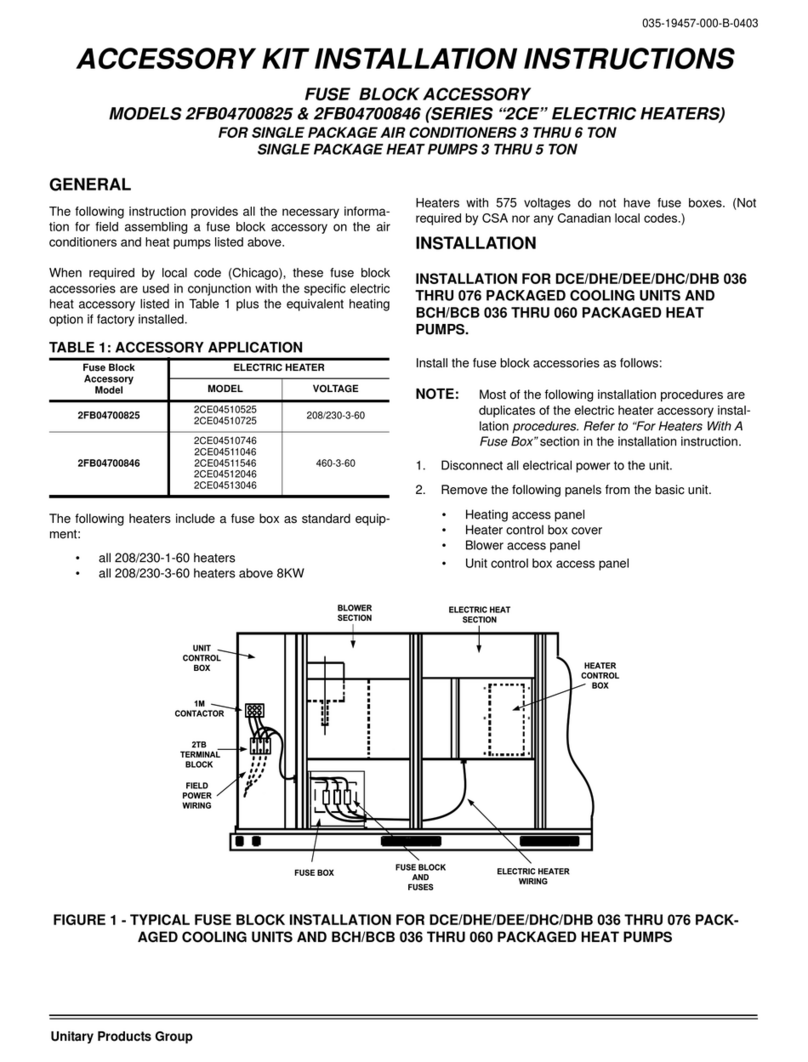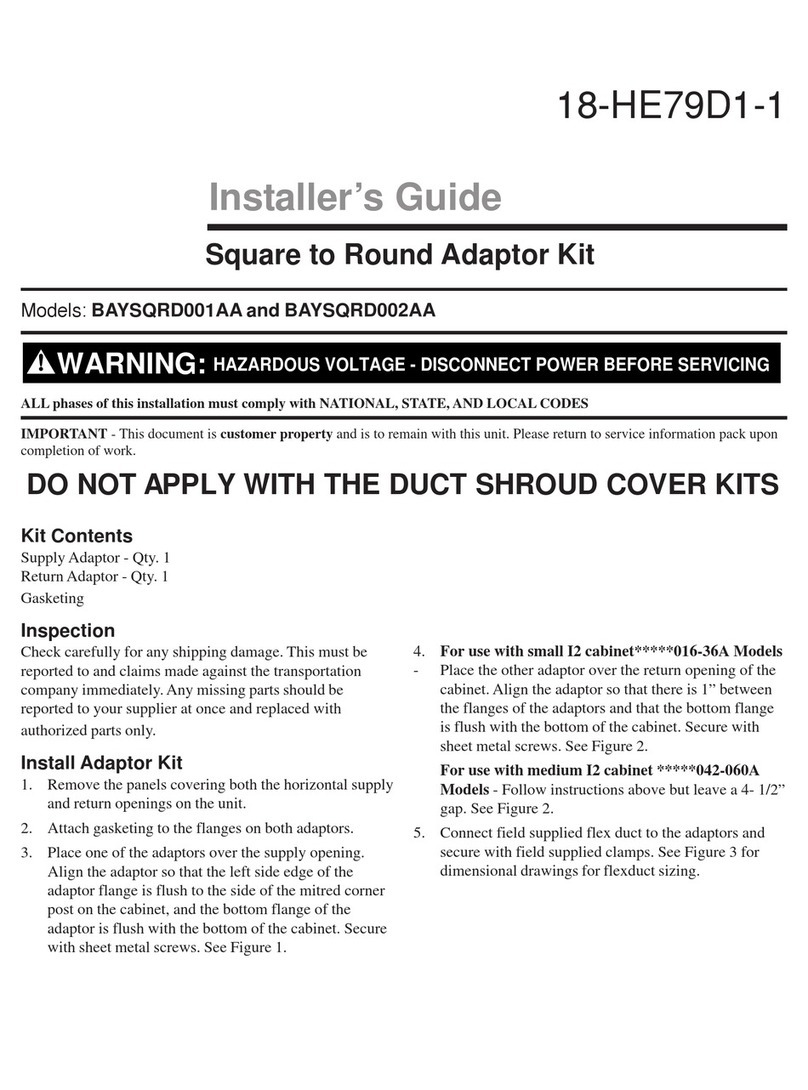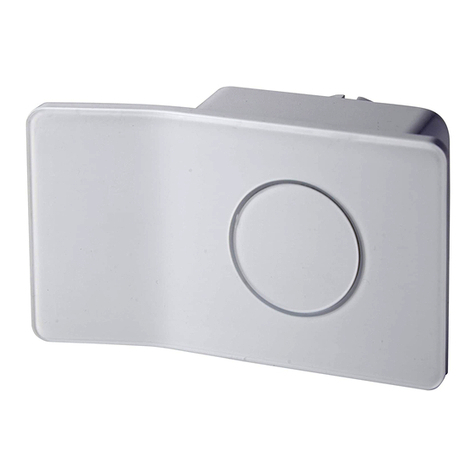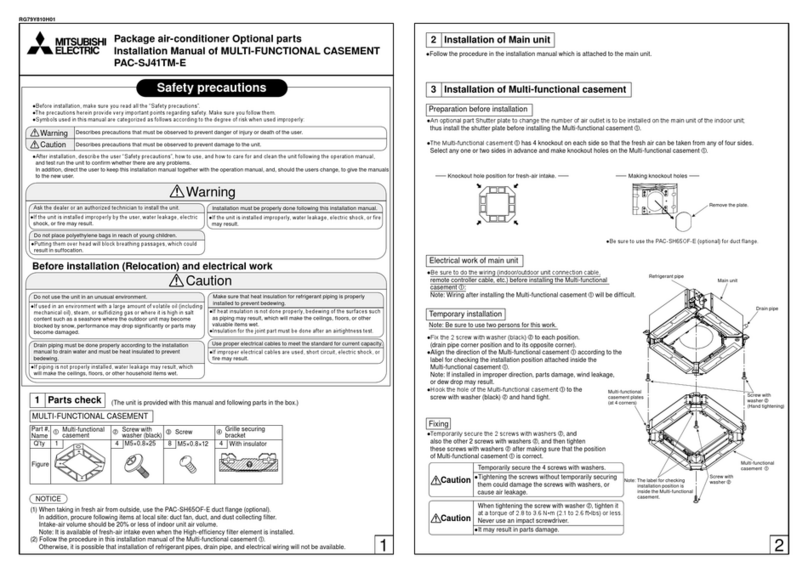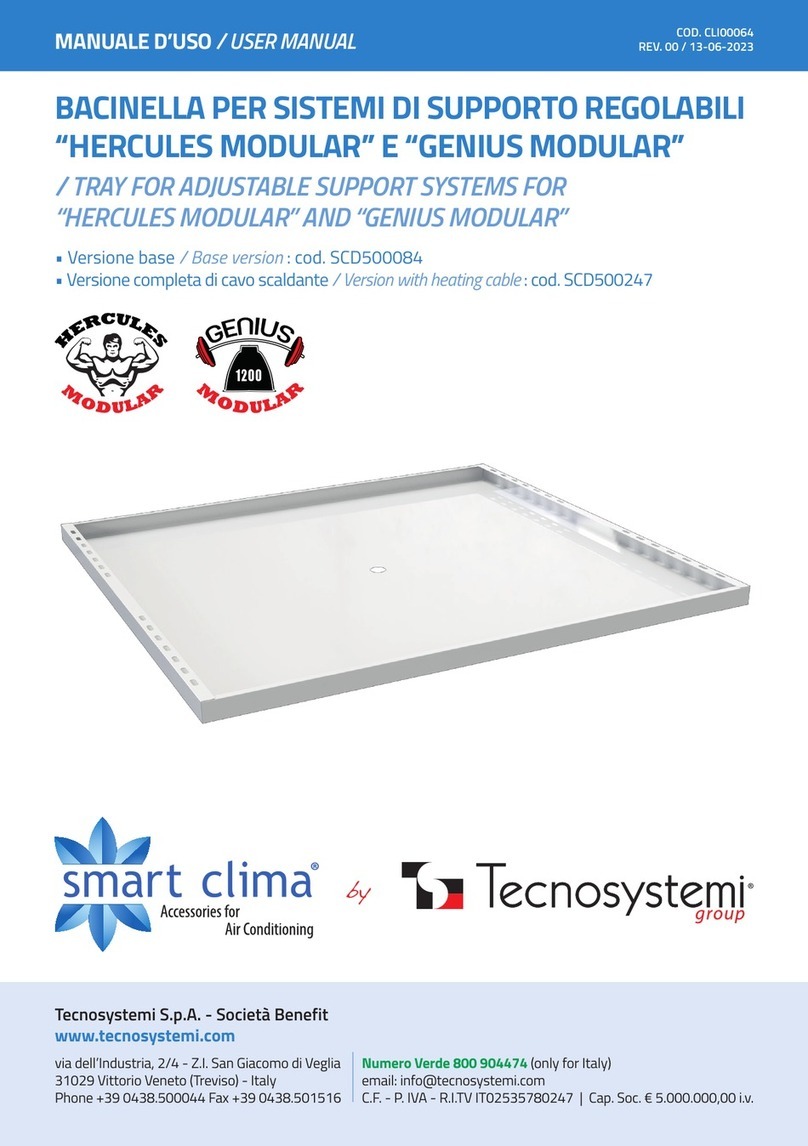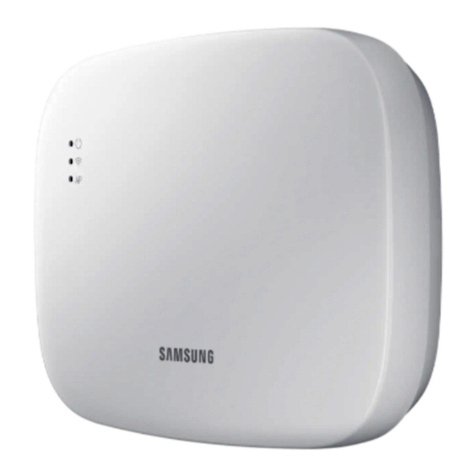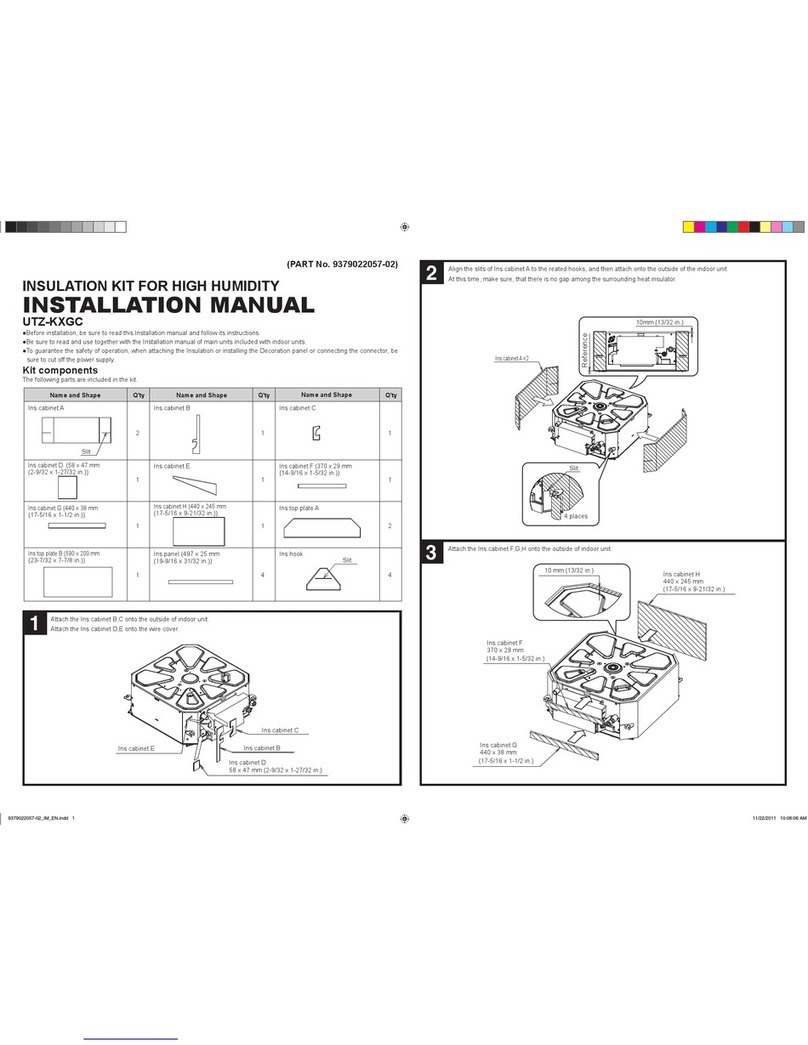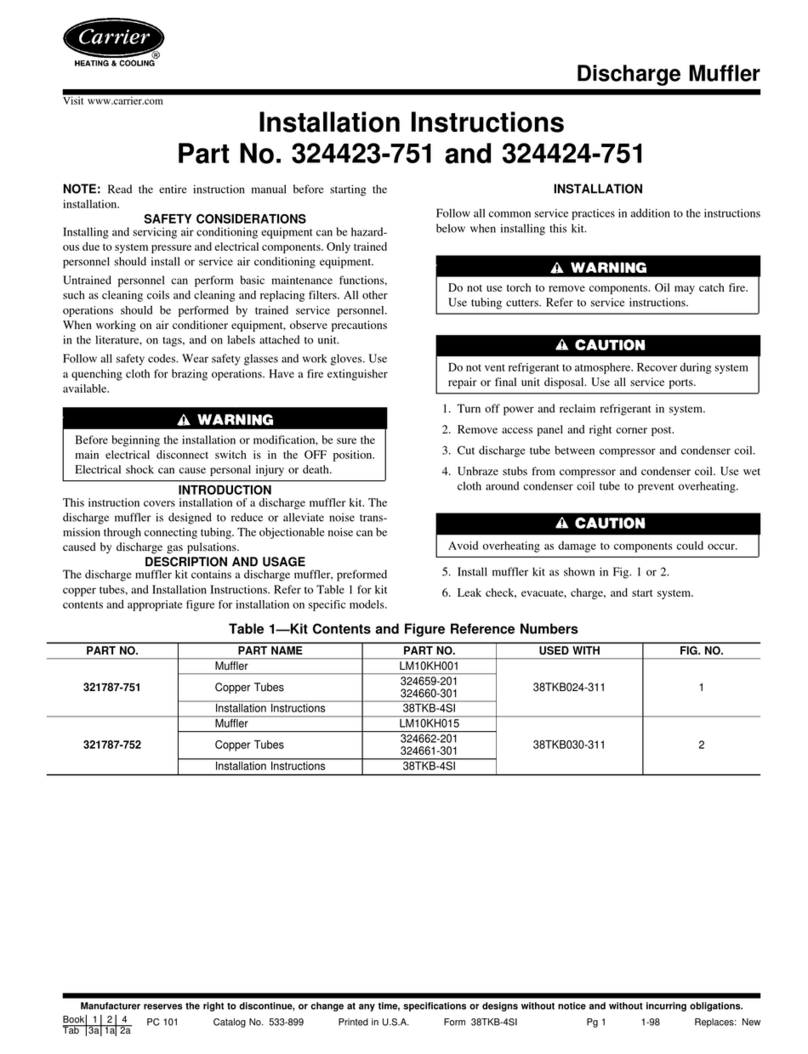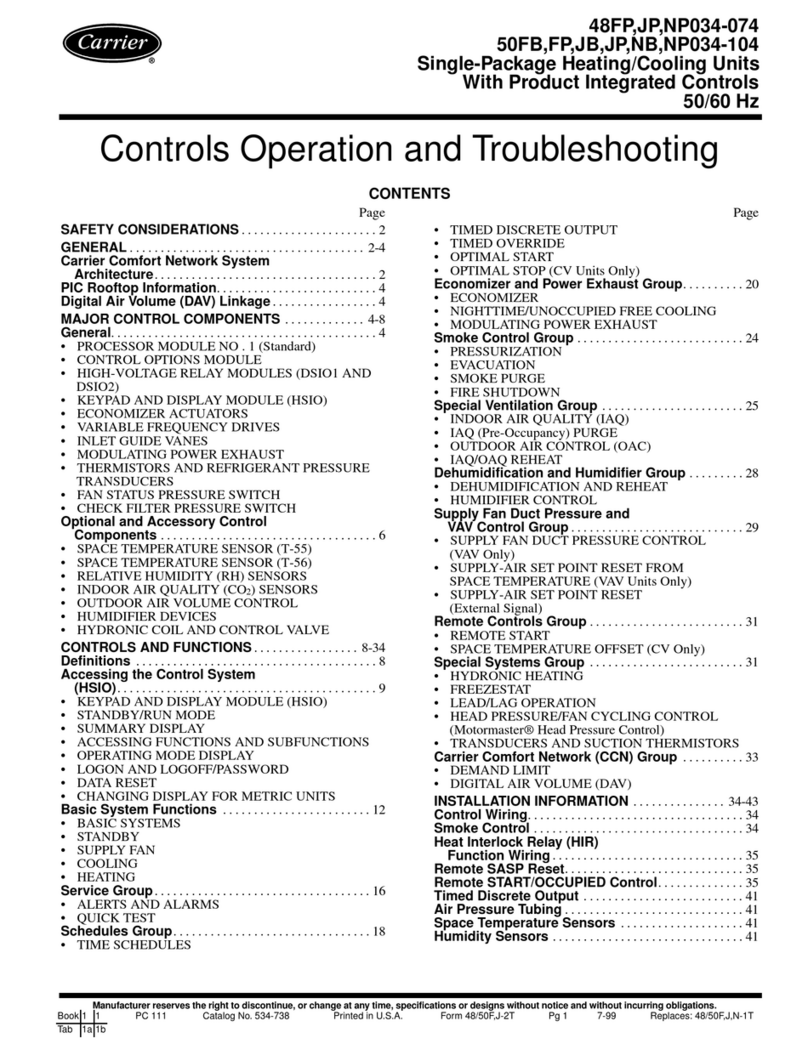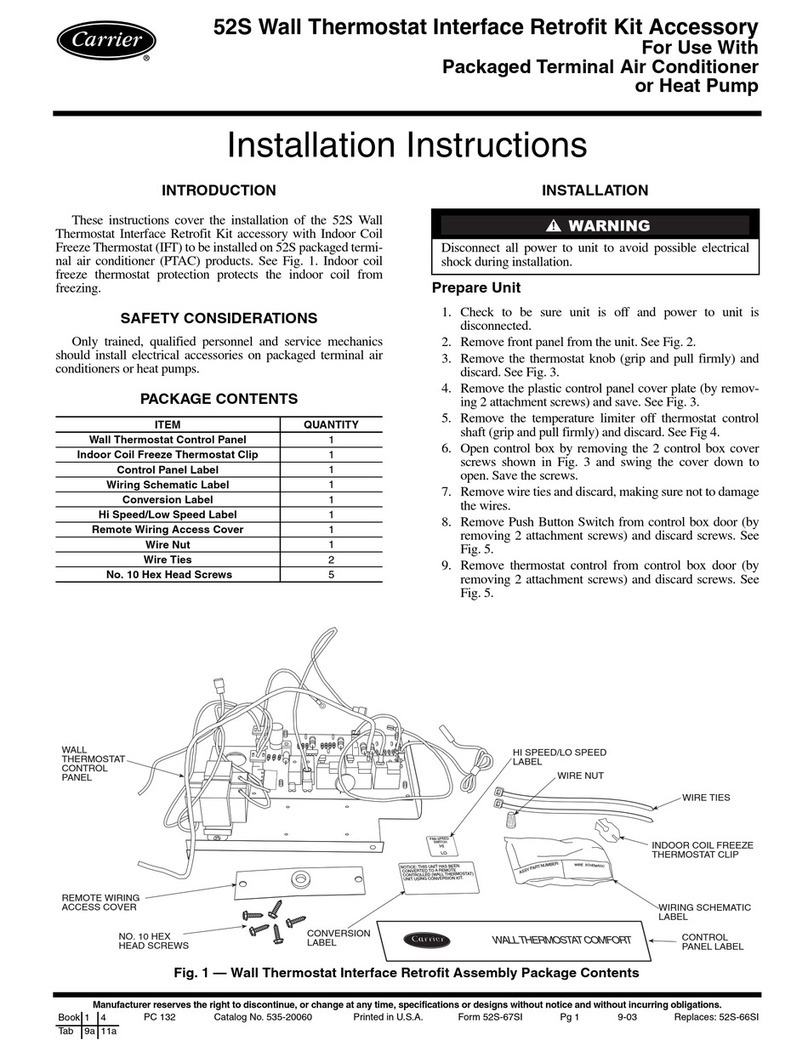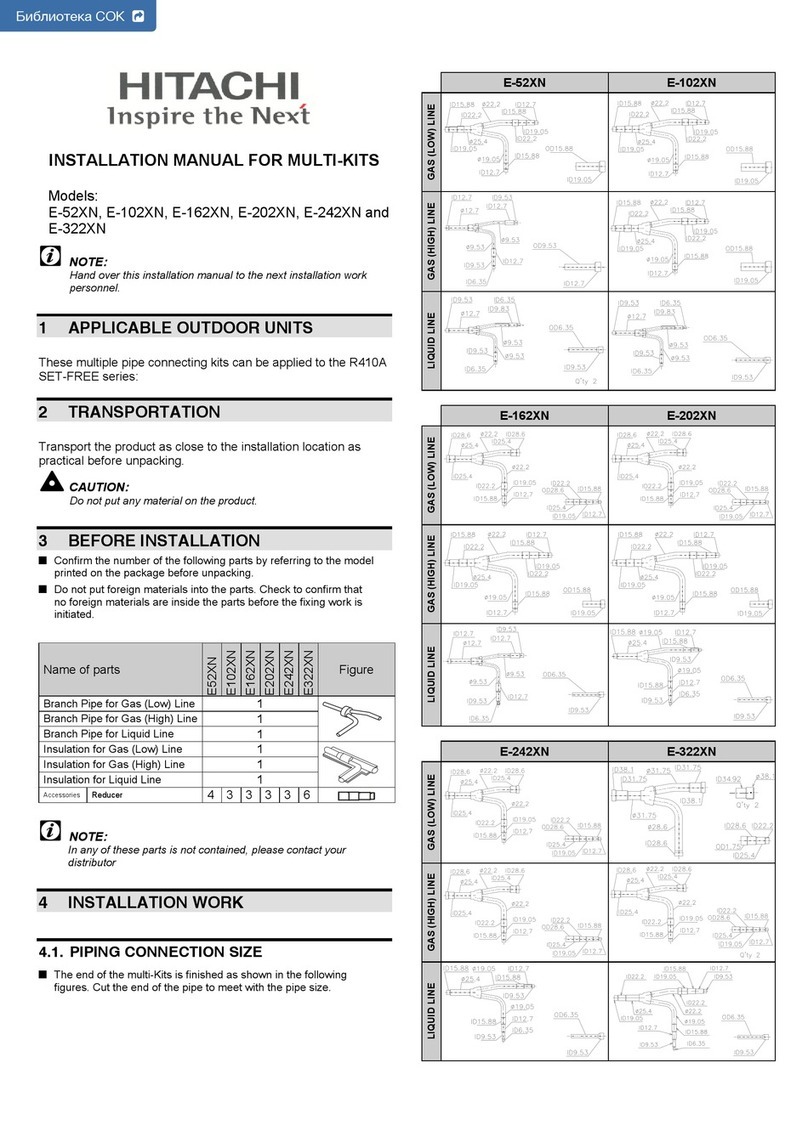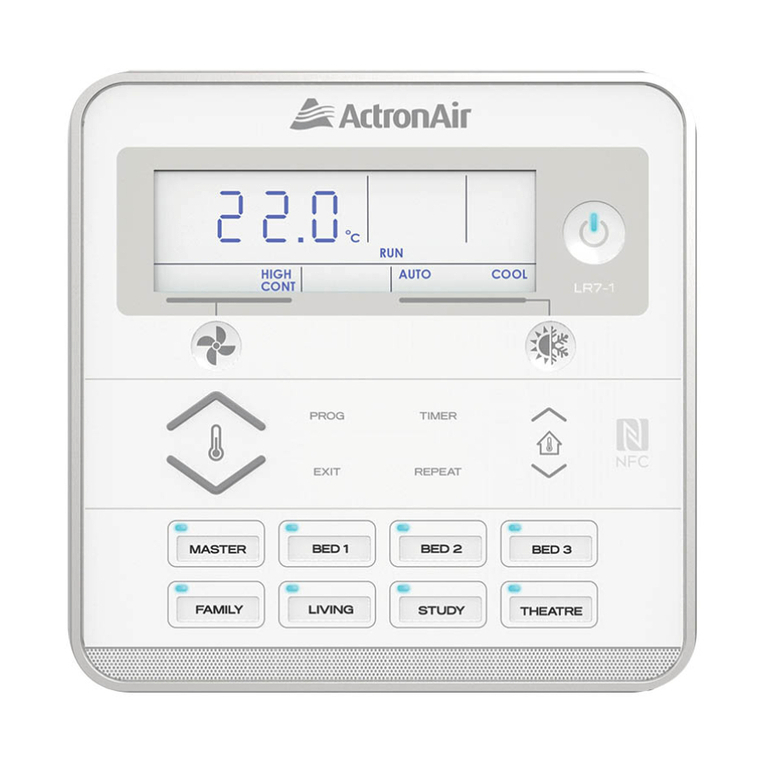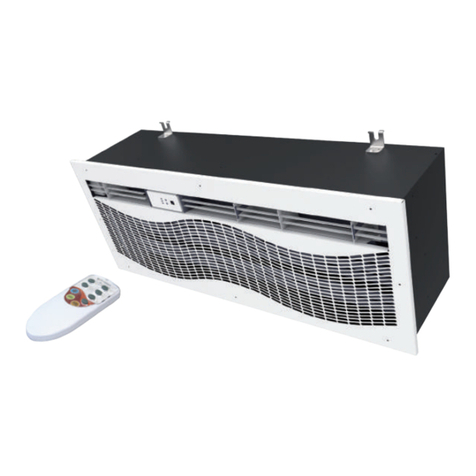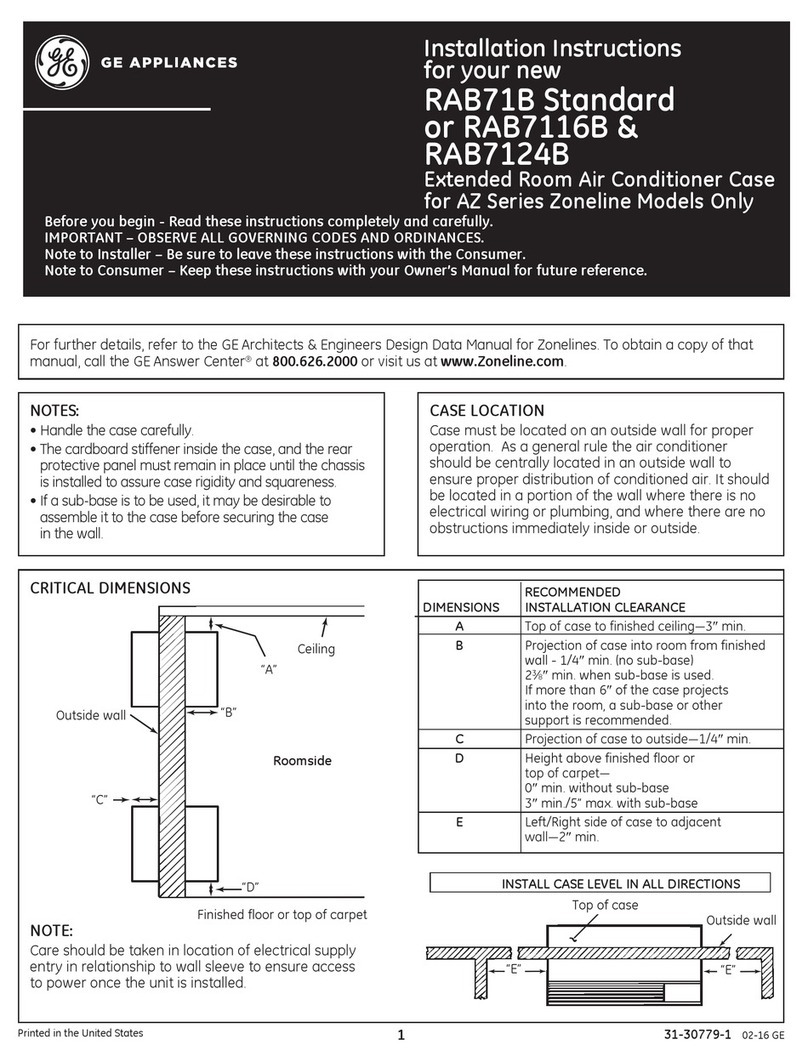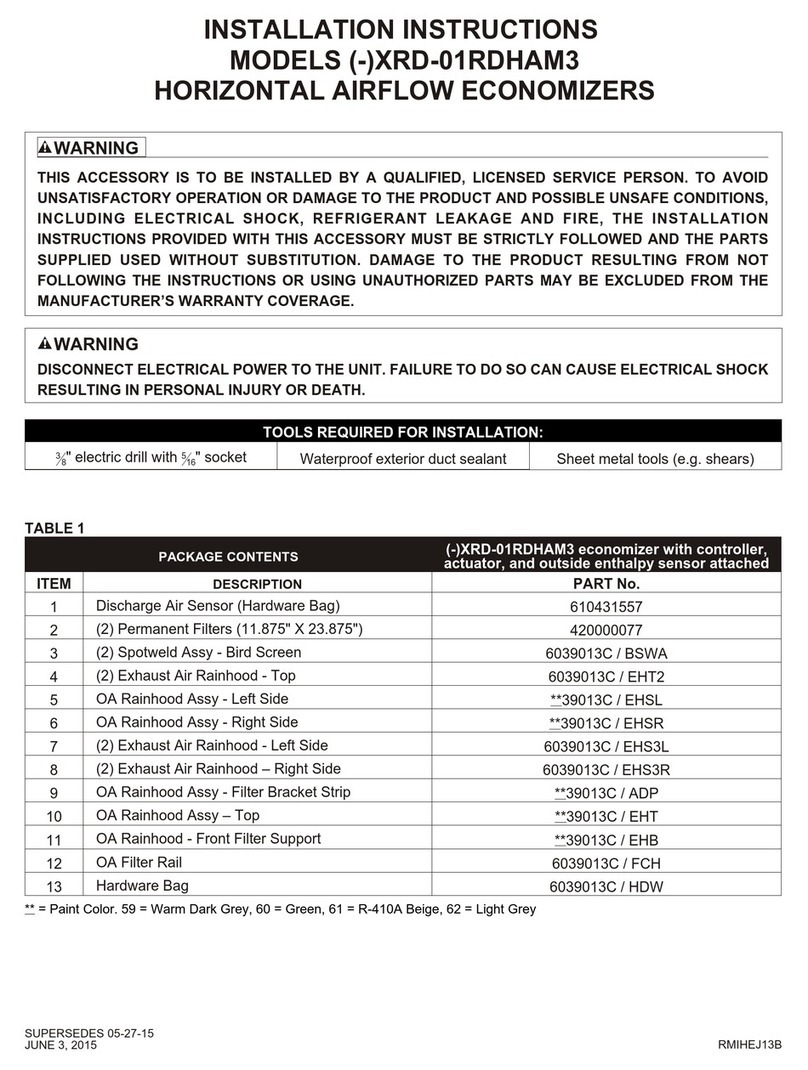
TROUBLESHOOTING
PROBLEM CAUSE REMEDY
Damper does not
open. Indoor (evaporator) fan
is off. 1. Check to ensure that 24 vac is present at terminal C1 on the IFC or that
24 vac is present at the IFO terminal. Check whether 24 vac is present at
PL6-1 (red wire) and/or PL6-3 (black wire). If 24 vac is not present, check
wiring (see unit label diagram).
2. Check proper thermostat connection to G on the connection board.
No power to economizer
motor. 1. Check that SW3 is properly making contact with the damper blade. Check
that SW1 is in the NC (normally closed) position.
2. Check diode D18. If diode is not functioning properly, replace D18.
3. Confirm that the economizer control board is grounded properly at PL6-4
(brown wire) and at brown terminal of the economizer control board (brown
wire). The economizer motor must also be grounded properly at the negative
motor terminal (brown wire).
4. Verify SW1 and SW3 are working and wired properly (see unit label
diagram).
5. Check for 24 vac input at both PL6-1 (red wire) and PL6-3 (black wire). If
24 vac not present, check unit wiring (see unit label diagram). If 24 vac is
found in both places, check for 24 vac at the yellow terminal of the econo-
mizer control board (yellow wire). If 24 vac power is not present, replace
the economizer control board.
Economizer motor failure. If the indoor (evaporator) fan and economizer motor are energized, verify that
there is a minimum of 18 vdc at the positive motor terminal. If the motor is not
operating, replace the motor.
Economizer operation
limited to minimum
position.
OAT or EC set too high. 1. Set at correct temperature (3 F below indoor space temperature).
2. Check OAT or EC by setting above outdoor temperature or humidity level.
If the OAT or EC switches do not close, replace OAT or EC.
Economizer control board
incorrectly wired or not
functioning.
1. Perform the following tests when OAT or EC is closed, Y1 is called for, and
damper is at minimum position. Confirm 24 vac on gray terminal of the
economizer control board (gray wire). If 24 vac is not present, check wiring
(see unit label diagram).
2. Verify that SW1 and SW3 are wired correctly and working properly (see unit
label diagram).
3. Check to ensure that 24 vac exists at PL6-2 (blue wire). If 24 vac is not
present, check wiring (see unit wiring label diagram).
4. Check 24 vac output at PL6-10 (white wire). If 24 vac is not present, replace
economizer control board.
Incorrect SAT wiring or in-
operative SAT. 1. After verifying that the OAT and EC settings and the economizer control
board wiring are correct, check to ensure that the 24 vac terminal of the SAT
has 24 vac (white wire). If OAT, EC, and control board are functioning and
wired properly and no 24 vac exists, check wiring (see unit label diagram).
2. If supply-air temperature is greater than 57 F, 24 vac should be found at ter-
minal T2 on the SAT (pink wire). If 24 vac is not present, replace SAT.
Damper does not
close. Incorrect economizer
wiring. 1. Verify that SW2 and SW4 are wired and working properly (see unit label
diagram).
2. Check diode D19. If diode is not functioning properly, replace D19.
Incorrect damper actuator
wiring or inoperative econo-
mizer circuit board.
1. After verifying that the wiring is correct, modulate the damper to the mini-
mum position. Remove the calls for G.
2. If the damper does not move, check for 24 vac at PL6-1 (red wire). If 24 vac
is not present, check wiring (see unit label diagram).
3. If damper still does not move, check for 24 vac at blue terminal of econo-
mizer control board (blue wire). If 24 vac is not present, replace the econo-
mizer circuit board.
Incorrect SAT wiring or in-
operative SAT. 1. After verifying that the wiring is correct and the economizer control board is
functioning properly, place the OAT or EC switch in the closed position.
Place a call for Y1 and open the damper to the fully open position. Confirm
that the 24 vac terminal of the SAT has 24 vac (white wire). If 24 vac is not
present, check wiring (see unit label diagram).
2. If supply-air temperature is less than 52 F, 24 vac should be found at termi-
nal T1 on the SAT (violet wire). If 24 vac not found, replace SAT.
Economizer motor failure. If economizer control board and SAT are functioning properly, verify that there is
a minimum of 18 vdc at the positive motor terminal. If a minimum of 18 vdc is
present and the motor is still not operating, replace the motor.
Economizer damper
does not close on
power loss.
Insufficient battery power, in-
operative economizer control
board.
1. Check voltage potential across batteries. If lower than 14 vdc, replace close-
on-power-loss power supply (9-v alkaline batteries). Check this emergency
power supply on a regular basis or whenever the filters are changed.
2. If the close-on-power-loss and economizer control board are functioning
properly, check for 14 vdc or higher at the blue terminal of the economizer
control board (blue wire) when power is disconnected from unit. If 14 vdc is
not present, replace the control board.
LEGEND
C1 — Common Power
EC — Enthalpy Control
IFC — Indoor (Evaporator) Fan Contactor
IFO — Indoor (Evaporator) Fan On
OAT — Outdoor-Air Thermostat
PL — Plug
SAT — Supply-Air Thermostat
SW — Economizer Position Switch
7
